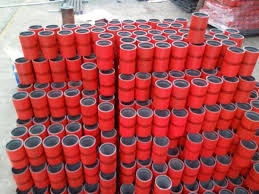Understanding Well Tubing and Casing in Oil and Gas Production Techniques
Understanding Well Tubing and Casing Essential Components of Oil and Gas Drilling
In the oil and gas industry, the extraction of hydrocarbons from underground reservoirs requires a well-structured and robust infrastructure. Among the critical components of this infrastructure are well tubing and casing, which play a pivotal role in ensuring safety, efficiency, and environmental protection throughout the drilling and production processes.
What is Well Casing?
Well casing refers to the series of steel pipes that are installed in drilled wells to provide structural integrity to the borehole. The primary purpose of casing is to prevent the collapse of the wellbore, isolate fluids from different geological formations, and protect groundwater supplies from contamination. Typically, a well will be lined with multiple casing strings, which are categorized based on their depth and function.
The installation of casing occurs in various phases of the well construction process. After the initial drilling of the borehole, the first casing, often referred to as surface casing, is placed to secure the uppermost part of the well. This casing extends from the surface down to a designated depth, providing stability and preventing the entry of shallow groundwater into the drilled well. Subsequent casings, such as intermediate and production casing, are installed to reach deeper formations and help manage the particular pressures and fluids encountered during extraction.
What is Well Tubing?
In contrast, well tubing is the smaller diameter pipe that is installed inside the production casing after the well has been drilled and completed. The primary function of tubing is to transport the hydrocarbons from the reservoir to the surface. The tubing has a critical role due to the high pressures and temperatures associated with the production of oil and gas.
Well tubing is designed to withstand the harsh conditions found within the wellbore, including corrosive fluids, extreme pressures, and elevated temperatures. It comes in various sizes and grades, determined by the specific requirements of the well and the type of hydrocarbons being produced. The tubing string is typically connected to a variety of downhole equipment, including pumps and valves, which assist in the extraction and transport of oil and gas to the surface.
well tubing and casing

The Importance of Well Casing and Tubing
The integrity of both casing and tubing is essential for the successful production of hydrocarbons. Properly installed casing safeguards the environment by preventing leaks that could contaminate groundwater or cause surface pollution. In addition, casing ensures that the well remains productive over its lifespan, minimizing the risk of failure that could lead to costly delays and safety hazards.
On the other hand, tubing plays a crucial role in optimizing production efficiency. The design and installation of tubing need to accommodate the flow rates and pressures of the extracted hydrocarbons, thus requiring careful engineering and materials selection. In cases where the tubing becomes damaged or corroded, the entire production operation can be compromised, leading to costly repairs and downtime.
Technological Advancements in Casing and Tubing
Advancements in technology have significantly improved the materials and techniques used in casing and tubing operations. The development of high-strength alloys and composite materials has enhanced the durability and resistance of these components to pressure, temperature, and corrosive environments. Additionally, the use of advanced modeling and simulation techniques during the design phase allows engineers to optimize the casing and tubing specifications for better performance under varying geological conditions.
Conclusion
In conclusion, well tubing and casing are fundamental elements of the oil and gas drilling process. They ensure the structural integrity of wells, protect the environment, and enable the efficient extraction of hydrocarbons. As the industry continues to evolve with new technologies and sustainability initiatives, the importance of reliable and effective casing and tubing processes will remain paramount. Understanding their function and significance is crucial for anyone involved in the oil and gas sector, from engineers to environmental specialists, as these components are essential for successful and responsible resource extraction.
-
Unlock the Benefits of Pup Joints for Your OperationsNewsOct.31,2024
-
The Quality of Casing Couplings from ChinaNewsOct.31,2024
-
The Essential Role of Pup Joints in Drilling OperationsNewsOct.31,2024
-
The Benefits of Tubing Couplings for Your ProjectsNewsOct.31,2024
-
Enhance Your Drilling Operations with Tubing Pup JointsNewsOct.31,2024
-
Elevate Your Drilling Operations with Tubing CrossoversNewsOct.31,2024







